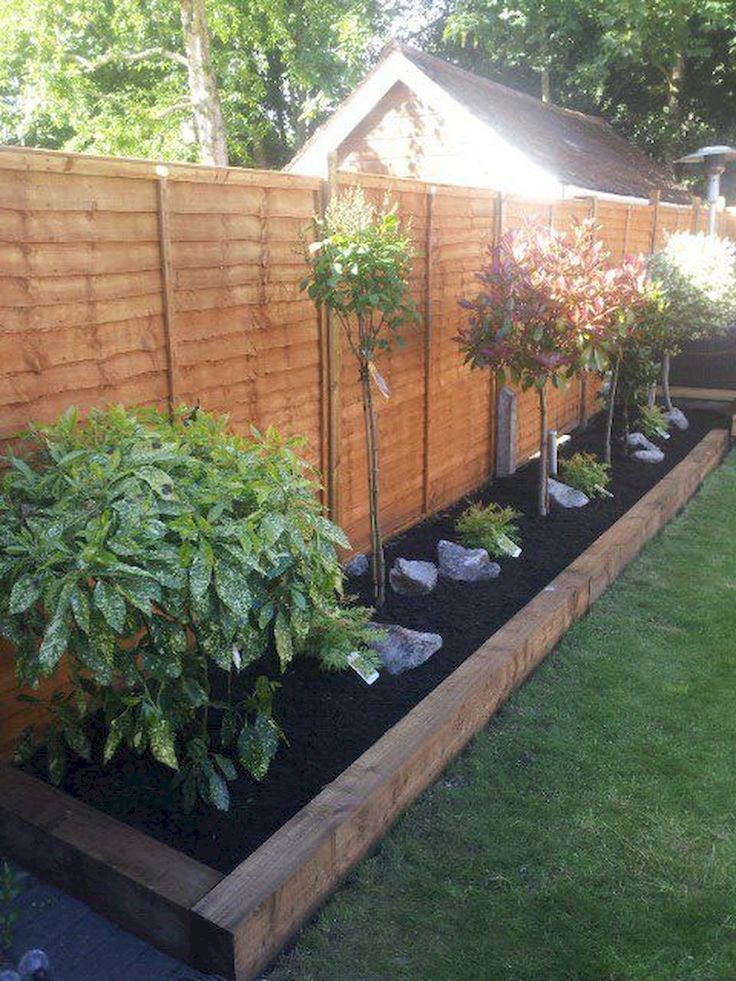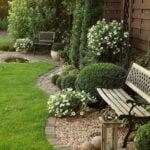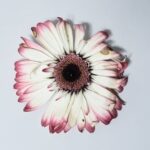A well-designed layout can make all the difference when it comes to your herb garden. From maximizing growth potential to creating an aesthetically pleasing design, the layout of your herb garden plays a crucial role in its overall success.
When planning your herb garden, it is essential to consider factors such as space availability, functionality, plant selection, and visual appeal. By carefully considering these aspects and implementing an effective design, you can ensure that your herb garden thrives and provides you with a bountiful harvest.
Before diving into the specifics of designing an herb garden layout, it is important to understand the basics. This includes factors such as sunlight requirements, growth habits of different herbs, and complementary growth patterns. By gaining this knowledge, you will be able to create a layout that takes advantage of each plant’s unique needs while fostering healthy growth for all.
When assessing available space for your herb garden, it is important to evaluate factors such as sunlight exposure, soil quality, and accessibility. Taking these into consideration will help you determine the best layout for your herbs so that they receive optimal conditions for growth. Additionally, designing for functionality ensures that your herbs are placed in a way that makes them easily accessible for harvesting and maintenance.
In the following sections of this article series on Layout Herb Garden Design, we will delve deeper into each aspect mentioned above and provide practical tips and techniques for creating an effective layout. By understanding the importance of a well-planned design and learning how to implement one effectively, you can set yourself up for success in growing a thriving and beautiful herb garden.
Understanding the Basics
Before designing an herb garden layout, it is crucial to understand the basics and consider essential factors that can greatly impact the success and functionality of your garden. By taking these factors into account, you will be able to create a well-designed layout that maximizes the growth and potential of your herbs.
One important factor to consider is sunlight requirements. Most herbs require full sun to thrive, so it is important to evaluate the area where you plan to create your herb garden and assess how much sunlight it receives throughout the day. This will help you determine the best location for your herbs and ensure they receive adequate sunlight for optimal growth.
Another factor to consider is soil quality. Herbs generally prefer well-draining soil that is rich in organic matter. Before starting your herb garden, it is advisable to test the soil quality and make any necessary amendments or improvements. This may involve adding compost or organic fertilizer to enrich the soil and provide essential nutrients for your herbs.
Spacing between plants is also crucial when designing an herb garden layout. Different herbs have varying growth habits and widths, so it is important to carefully plan their placement to allow enough space for each plant’s growth without overcrowding. Providing ample spacing not only promotes better air circulation but also helps prevent disease spread among plants.
To summarize, understanding these basic factors before designing an herb garden layout is essential for a successful gardening experience. By considering factors such as sunlight requirements, soil quality, and proper plant spacing, you can create a layout that promotes healthy growth and maximizes the potential of your herbs.
Assessing Available Space
When it comes to designing an herb garden, one of the most critical steps is assessing the available space and determining the best layout. By carefully evaluating your garden area, you can make informed decisions about how to maximize the use of space and create a functional and visually appealing herb garden. Here are some tips to help you assess your available space and plan the perfect layout for your herbs.
1. Measure Your Garden Area: Start by measuring the dimensions of your garden area. This will allow you to have a clear understanding of how much space you have to work with. Knowing the exact measurements will help you determine how many beds or containers you can fit into the space and what size they should be.
2. Consider Sunlight and Shade: Take note of how sunlight moves through your garden throughout the day. Different herbs have varying sunlight requirements, so it’s crucial to understand which areas receive full sun, partial shade, or full shade. This will help you decide where to position specific herbs in your layout.
3. Evaluate Soil Quality: Assessing the quality of your soil is essential for successful herb gardening. Consider factors such as drainage, pH levels, and nutrient content. If needed, amend the soil before planting by adding organic matter or adjusting pH levels to ensure optimal growing conditions for your herbs.
4. Plan for Accessibility: Accessibility is an important factor when designing an herb garden layout. You’ll want easy access to each plant for harvesting, pruning, and maintenance tasks. Make sure there is sufficient space between beds or containers to comfortably navigate around them without damaging any plants.
5. Think About Future Expansion: If you foresee expanding your herb collection in the future or adding new features like trellises or arbors, it’s wise to plan your initial layout with these considerations in mind. Leaving designated areas or pathways for future additions will save you time and effort later on.
By assessing your available space and considering factors such as sunlight, soil quality, accessibility, and potential expansion, you can determine the best layout for your herb garden. A well-designed layout will not only optimize growth but also enhance the overall appearance of your herb garden. In the next section, we will explore the key elements to incorporate in your herb garden design for functionality and ease of use.
Designing for Functionality
When designing an herb garden, it is crucial to consider not only its aesthetic appeal but also its functionality. A well-designed herb garden layout should not only be visually pleasing but should also be practical and easy to use. In this section, we will explore the key elements that you should incorporate in your herb garden design to ensure functionality and ease of use.
One important element to consider is the accessibility of your herbs. When planning your herb garden layout, arrange your herbs in a way that makes it easy for you to access them for harvesting, watering, and maintenance. Place frequently used herbs closer to pathways or entrances so that you can easily reach them without disturbing other plants.
Another key element is organization. Categorize your herbs based on their growth habits and requirements. Group together herbs with similar moisture and sunlight needs so that you can provide them with the appropriate care. This will make it easier for you to manage your herbs’ health and ensure they thrive in your garden.
Additionally, incorporating pathways or stepping stones into your herb garden design can greatly enhance its functionality. By creating designated walkways, it becomes easier to navigate through the garden, minimizing accidental trampling of delicate plants. Pathways also provide accessibility for regular maintenance tasks such as pruning or weeding.
To summarize, when designing an herb garden for functionality and ease of use, prioritize accessibility, organization, and pathways. These key elements will ensure that your herb garden is not only visually appealing but also practical and convenient to work with.
| Key Elements | Description |
|---|---|
| Accessibility | Arrange herbs for easy access during harvesting and maintenance. |
| Organization | Group herbs based on their growth habits and requirements. |
| Pathways | Create designated walkways to navigate the garden and facilitate maintenance. |
Selecting the Right Plants
Growth Habits
When selecting herbs for your garden, it is important to consider their growth habits. Some herbs, such as mint and lemon balm, are known to spread rapidly and can become invasive if not properly contained. On the other hand, herbs like rosemary and lavender tend to grow more slowly and maintain a compact shape. Understanding the growth habits of different herbs will help you plan the layout accordingly and prevent overcrowding or competition for resources.
Sunlight Requirements
Another important factor to consider when choosing herbs is their sunlight requirements. Most herbs thrive in full sun conditions, which means they require at least six to eight hours of direct sunlight each day. However, there are also herbs that can tolerate partial shade or even thrive in shady areas. By assessing the sunlight patterns in your garden, you can determine which herbs will flourish in different areas and plan your layout accordingly.
Complementary Growth Patterns
Consider how different herbs will interact with each other in terms of their growth patterns. Some herbs have sprawling habits that cascade over the edges of containers or spill onto pathways while others have an upright form with tall stems that create height in the garden. By selecting a combination of herbs with contrasting growth patterns, you can create visual interest and balance in your herb garden design.
Arranging and Grouping
When it comes to designing your herb garden layout, one important aspect to consider is how to arrange and group your different herbs effectively. By strategically placing your herbs, you can optimize their growth and create a visually appealing design that enhances the overall aesthetic of your garden.
One technique for arranging herbs is based on their growth habits. It is crucial to group together herbs that have similar growing requirements. For example, herbs like basil, oregano, and thyme thrive in full sun, so it would be advantageous to place them in a sunny spot where they can receive ample sunlight throughout the day.
On the other hand, shade-loving herbs such as mint and parsley should be grouped together in a shaded area of your garden. This way, each herb can receive the ideal amount of sunlight for its optimal growth.
Additionally, consider the complementary growth patterns of different herbs when arranging them. Some herbs tend to spread out while others grow vertically. By pairing these growth patterns together, you can create an aesthetically pleasing design that maximizes space while promoting healthy growth.
For instance, tall-growing herbs like rosemary or dill can be placed against a wall or trellis while low-growing plants like thyme or chamomile can be planted in front of them. This layering technique not only adds visual interest but also makes it easier to access all the different herbs in your garden.
To further enhance the organization and aesthetics of your herb garden layout, you could also consider grouping herbs according to their uses or themes. For instance, you might create a separate section for culinary herbs like basil, parsley, and cilantro near your kitchen for easy access during meal preparation.
Alternatively, you could group medicinal herbs such as lavender, chamomile, and echinacea together to create a relaxing and healing corner of your garden. By grouping herbs based on their purposes, you can both showcase their beauty and make it more convenient for harvesting and using them in your daily life.
Overall, arranging and grouping the different herbs in your garden requires thoughtful consideration of their growth habits, complementary patterns, and intended use. By implementing these ideas and techniques, you can optimize the growth of each herb while creating a visually pleasing design that reflects your personal style and enhances the overall appeal of your herb garden layout.
| Arrangement Technique | Description |
|---|---|
| Growth Habits | Grouping herbs based on their sunlight requirements and shade preferences. |
| Complementary Growth Patterns | Pairing herbs with different growth patterns to create an aesthetically pleasing design. |
| Grouping by Uses or Themes | Categorizing herbs according to their culinary or medicinal purposes. |
Adding Visual Appeal
In addition to functionality, an herb garden should also be visually appealing. By incorporating various design elements such as color, texture, and height, you can create an attractive and inviting herb garden layout.
One important aspect to consider is color. Choose herbs with different leaf colors to add interest and diversity to your garden. For example, you can mix herbs with green, purple, variegated, or silver foliage. Additionally, consider the color of the flowers that certain herbs produce. Herbs such as lavender or chamomile can provide pops of color while attracting pollinators.
Another design element that can enhance the visual appeal of your herb garden is texture. Combine herbs with different leaf textures to create contrast and visual interest. For instance, you can pair feathery herbs like dill or fennel with herbs that have broader leaves like basil or sage. This interplay of different textures will make your herb garden more visually pleasing.
Height is another factor to consider when designing your herb garden layout. Arrange plants in a way that creates a dynamic visual effect by placing taller plants in the back or center of the garden bed and shorter plants towards the front or edges. This layering technique not only adds depth but also ensures that each plant has enough sunlight exposure without overshadowing others.
Overall, incorporating design elements such as color, texture, and height into your herb garden will not only make it visually appealing but also create a harmonious and aesthetically pleasing space for you to enjoy. By carefully selecting and arranging your herbs based on these factors, you can transform your herb garden into a beautiful sanctuary that enhances both culinary experiences and visual delights.
- Mix herbs with different foliage colors.
- Consider the color of the flowers produced by certain herbs.
- Combine herbs with different leaf textures to create contrast.
- Arrange plants in a layered manner based on their height.
Maximizing Space
One of the biggest challenges when designing an herb garden is working with limited space. However, even if you have a small area to work with, there are innovative strategies that can help you make the most of it. By incorporating vertical gardening, containers, and interplanting techniques, you can create a thriving herb garden that maximizes your available space.
Vertical gardening is a great option for those who have limited horizontal space but ample vertical space. It involves growing herbs vertically against walls or trellises using various support structures. This not only saves valuable ground space but also adds visual interest to your garden. Some popular techniques for vertical gardening include using hanging baskets, wall-mounted planters, or repurposing everyday items like pallets or ladders as herb gardens.
Containers are another effective way to maximize space in your herb garden. They provide flexibility in terms of placement and allow you to utilize any unused areas such as balconies or windowsills. There is a wide range of container options available, from traditional terracotta pots to modern self-watering planters. When choosing containers for your herbs, ensure that they have adequate drainage holes and enough depth for root growth.
Interplanting is a technique where different plants with complementary growth patterns are grown together in close proximity. In an herb garden, this means strategically mixing herbs that grow well together and have similar care requirements. For example, pairing taller herbs like rosemary or lavender with low-growing ones like thyme or oregano can create an attractive layered effect while saving space. Additionally, interplanting can deter pests and promote better overall plant health.
Incorporating these innovative techniques into your herb garden design will help you maximize the available space and create a beautiful and productive area for growing herbs. Whether through vertical gardening, containers, or interplanting, you can make the most of even the smallest of spaces. These strategies not only increase your herb yield but also add creativity and aesthetic appeal to your garden.
Maintenance and Care
Maintaining a well-designed herb garden goes beyond just its layout. Adequate maintenance and care are essential to ensure the health and vitality of your herbs. This section will provide practical tips for watering, pruning, and pest control to help you keep your herb garden thriving.
Watering is a crucial aspect of herb garden care. Different herbs have different water requirements, so it’s important to understand the specific needs of each plant. Most herbs prefer well-drained soil, so avoid over-watering them, as that can lead to root rot and other diseases.
On the other hand, underwatering can cause wilting and stunted growth. As a general rule, it’s best to water your herb garden deeply but less frequently rather than shallowly but more often. Aim to keep the soil consistently moist but not excessively wet.
Pruning is another vital practice in maintaining the health and shape of your herb garden. Regular pruning helps stimulate new growth, maintain compactness, and prevent overcrowding. It also encourages better airflow and reduces the risk of disease. When pruning herbs such as basil or mint, pinch off the stem tips regularly to encourage bushier growth. For woody perennial herbs like rosemary or thyme, trim back any dead or damaged branches in early spring to promote vigorous growth throughout the season.
Pest control is an integral part of maintaining a healthy herb garden. Some common pests that may attack your herbs include aphids, caterpillars, slugs, snails, and mites. To prevent pest infestations, consider planting companion plants known for their natural repellent properties alongside your herbs.
For instance, marigolds can repel aphids while attracting beneficial insects like ladybugs that feed on pests. Regularly inspect your plants for signs of damage or pests and take appropriate measures at the first sign of an infestation. You can use organic insecticidal soaps or neem oil sprays as a safe and effective method of pest control.
By following these practical tips for maintenance and care, you can ensure the health and vitality of your herb garden. Remember to monitor your herbs regularly, adjust watering routines accordingly, prune when needed, and promptly address any pest issues. With proper care, your herb garden will thrive, providing you with a bountiful harvest of fresh and flavorful herbs throughout the growing season.
Conclusion
In conclusion, designing a well-planned layout for your herb garden is crucial for its overall success. Throughout this article, we have discussed the importance of understanding the basics, assessing available space, designing for functionality, selecting the right plants, arranging and grouping them effectively, adding visual appeal, maximizing space, and maintaining proper care.
A well-designed layout ensures that you can optimize the growth of your herbs while creating an aesthetically pleasing design. By considering factors such as sunlight requirements and complementary growth patterns when selecting plants, you can create a harmonious and thriving garden. Additionally, incorporating elements like color, texture, and height adds visual interest to your herb garden.
It is also important to make the most of limited space by utilizing innovative strategies such as vertical gardening, containers, and interplanting techniques. These methods not only maximize space but also allow you to grow a wider variety of herbs.
Lastly, remember to prioritize maintenance and care for your herb garden. Regular watering, pruning, and pest control are essential to ensure the health and vitality of your plants.
Frequently Asked Questions
What Is the Best Layout for a Herb Garden?
The best layout for a herb garden depends on various factors such as available space, sunlight exposure, and personal preference. One popular layout is the rectangular or square design with clearly defined beds or raised beds to separate different herbs. This allows for easy access and visual organization.
Another option is the circular layout, often referred to as a “herb spiral,” where herbs are planted on different levels, utilizing vertical space effectively. Additionally, interplanting herbs with vegetables or flowers in a mixed bed can maximize space utilization and enhance biodiversity. Ultimately, the best layout is one that meets your needs while taking into account the specific requirements of the herbs you wish to grow.
What Herbs Grow Best Together?
Some herbs have beneficial companionship when grown together due to their compatible growth habits, shared environmental preferences, or mutual pest management properties. For example, basil and tomatoes make great companions as they thrive in similar warm and sunny conditions and basil can help deter certain pests that affect tomatoes. Similarly, parsley and chives are often grown together since they require similar soil conditions and offer complementary flavors when used in cooking.
On the other hand, there are also herbs that should be kept separate due to their aggressive growth or potentially harmful interactions. It’s important to research the specific herbs you plan to grow and consider their compatibility before deciding which ones to plant together.
What Should an Herb Garden Look Like?
An herb garden can take on various looks depending on personal taste and available space. Generally, an herb garden should be visually appealing while being functional for growing and harvesting herbs. It can range from a simple container garden on a balcony or windowsill filled with potted herbs, to a dedicated plot in a backyard featuring neat rows or defined sections for each herb variety.
Incorporating pathways between beds or containers can aid accessibility and allow for easy maintenance tasks like weeding and pruning. Including decorative elements such as trellises, colorful plant markers, or even small sculptures can add charm and character to the herb garden. Ultimately, the design of an herb garden should reflect your personal style while providing a conducive environment for your herbs to flourish.

Welcome to my gardening blog! I am passionate about plants and enjoy sharing my knowledge and experiences with others. In this blog, I will write about everything related to gardening, from tips on how to get started to updates on my own garden projects.





